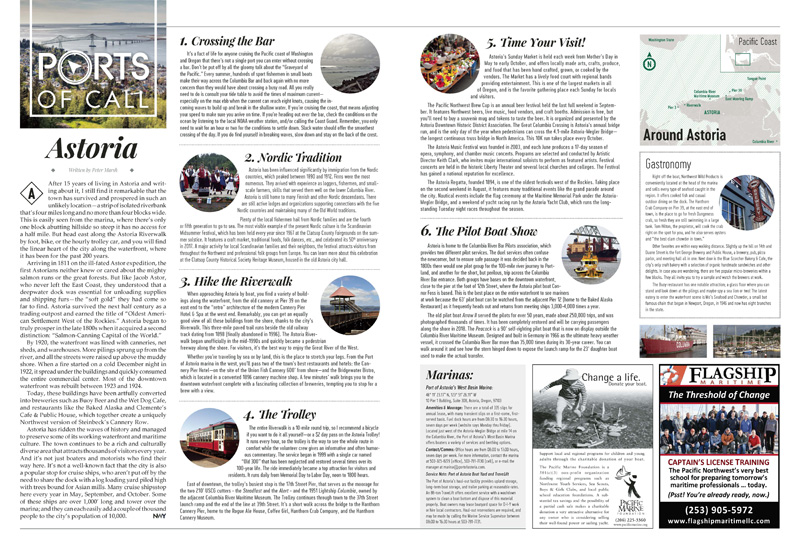After 15 years of living in Astoria and writing about it, I still find it remarkable that the town has survived and prospered in such an unlikely location—a strip of isolated riverbank that’s four miles long and no more than four blocks wide. This is easily seen from the marina, where there’s only one block abutting hillside so steep it has no access for a half mile. But head east along the Astoria Riverwalk by foot, bike, or the hourly trolley car, and you will find the linear heart of the city along the waterfront, where it has been for the past 200 years.
Arriving in 1811 on the ill-fated Astor expedition, the first Astorians neither knew or cared about the mighty salmon runs or the great forests. But like Jacob Astor, who never left the East Coast, they understood that a deepwater dock was essential for unloading supplies and shipping furs—the “soft gold” they had come so far to find. Astoria survived the next half century as a trading outpost and earned the title of “Oldest American Settlement West of the Rockies.” Astoria began to truly prosper in the late 1800s when it acquired a second distinction: “Salmon-Canning Capital of the World.”

By 1920, the waterfront was lined with canneries, net sheds, and warehouses. More pilings sprung up from the river, and all the streets were raised up above the muddy shore. When a fire started on a cold December night in 1922, it spread under the buildings and quickly consumed the entire commercial center. Most of the downtown waterfront was rebuilt between 1923 and 1924.
Today, these buildings have been artfully converted into breweries such as Buoy Beer and the Wet Dog Cafe, and restaurants like the Baked Alaska and Clemente’s Cafe & Public House, which together create a uniquely Northwest version of Steinbeck’s Cannery Row.
Astoria has ridden the waves of history and managed to preserve some of its working waterfront and maritime culture. The town continues to be a rich and culturally diverse area that attracts thousands of visitors every year. And it’s not just boaters and motorists who find their way here. It’s not a well-known fact that the city is also a popular stop for cruise ships, who aren’t put off by the need to share the dock with a log loading yard piled high with trees bound for Asian mills. Many cruise shipsstop here every year in May, September, and October. Some of these ships are over 1,000’ long and tower over the marina; and they can each easily add a couple of thousand people to the city’s population of 10,000.



